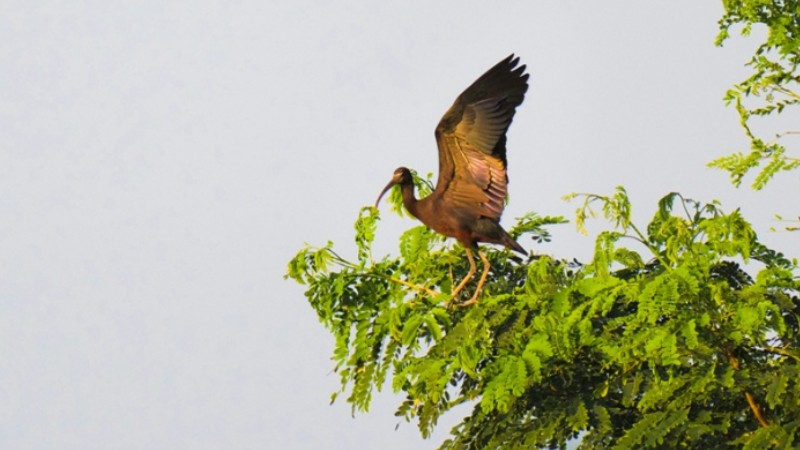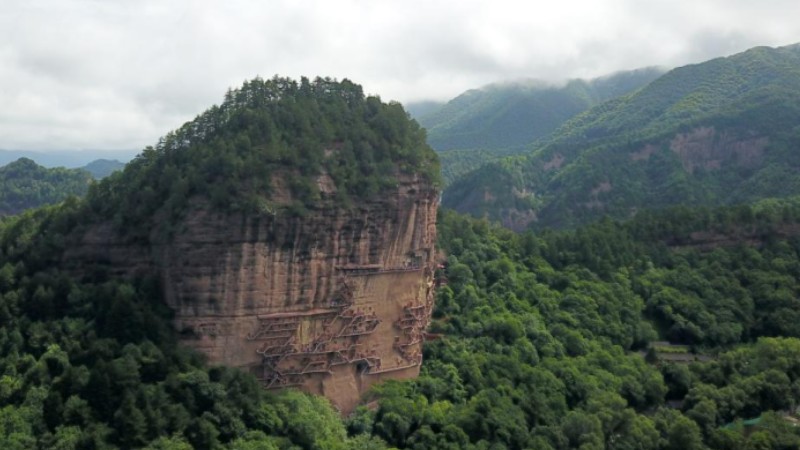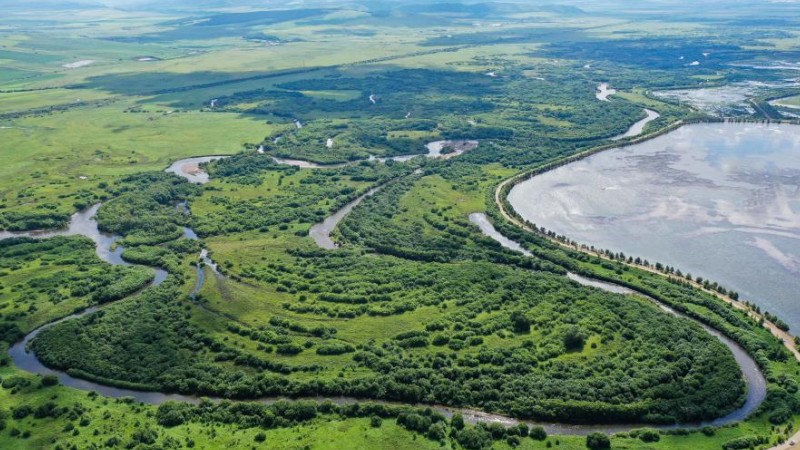Xinjiang Story: Uygur ecologist grapples with sand in "Sea of Death"
URUMQI, Aug. 3 (Xinhua) -- Merdan Keyum was a child when he first realized that sandstorms were his "enemy."
Merdan Keyum, a fifth-grader at the time, was taking a donkey cart with his brother to help in the cotton fields in his hometown in northwest China's Xinjiang Uygur Autonomous Region.
It was late spring. "The sky suddenly became pitch dark and I couldn't see anything. I could only hear the gales and feel large grains of sand battering my face. It really hurt. I was so scared that I cried, fearing that I might die."
Now, at 35, memories of the nightmarish incident still haunt him. However, his childhood "enemy" has already become one of his objects of study and combating the sand has become his current career.
Merdan Keyum was born in 1987 in what is today Gaochang District of the city of Turpan. Located only dozens of kilometers from the Kumtag Desert, the city is frequently plagued by sandstorms that often cause power outages and halt farmwork in springtime.
His personal experience convinced him that urgent action must be taken to bring the sandstorms under control. "As a child, I knew that trees needed to be planted to minimize the damage caused by wind and sand."
His father, an elementary school teacher for 32 years, told him to take care of the forests and plant more trees. The saplings he planted at the foot of the Huoyan (Flaming) Mountains when he was a child have now grown up.
Meanwhile, he has obtained a solid scientific education, empowering him to work more effectively on devising solutions. In 2018, after nearly a decade of study, he finally obtained a doctorate in ecology from Xinjiang University.
Following three years of postdoctoral experience at the Research Center for Eco-Environmental Sciences of the Chinese Academy of Sciences (CAS), he began working at the Xinjiang Institute of Ecology and Geography of CAS in 2021.
Merdan Keyum is now based in the Qira station under the Xinjiang Institute of Ecology and Geography, located in Qira County, on the southern edge of the Taklimakan Desert, China's largest desert, also known as the "Sea of Death."
In front of the Qira station, a windbreak of specially selected trees, measuring about 500 meters long and some 20 meters high, offers Merdan Keyum and his colleagues some precious shade from the scorching summer sun.
This coolness has been hard won. Sandstorms once forced the southern Xinjiang county of Qira, which means "red date" in Uygur, to relocate three times. Its people were tortured by the extreme weather conditions and still have painful memories.
"A heavy sandstorm once ripped through our house, and sand poured in through a hole, almost burying my two children," said Tohtirozi Matemer, a villager from Qira, traumatized by the terrible experience.
The Xinjiang Institute of Ecology and Geography established its Qira station in 1983 to tackle sandstorms and fight desertification. Scientists have since started to use science and technology for sand prevention and control.
"This windbreak of poplar trees was first created by the scientists who worked here more than 30 years ago. More trees have been planted over the years," said Merdan Keyum.
Sand prevention and control is no easy task.
"The fieldwork is hard and sometimes dangerous. As the ecological environment has improved, boars have started roaming in the wild. We have to carry sticks to drive them away and to give ourselves courage," he said.
During a tour of the windbreak, he stops to examine the roots of the Chinese tamarisk, confirming that the plant has good sand-fixating properties in this terrain, making it ideal for windbreaks and sand control.
The scientists' efforts have borne fruit. During the 2016-2020 period, Xinjiang, one of the most desertified and sandy regions in China, saw 1.89 million hectares of its desertified land restored, effectively reversing the trend of desertification.
"We will work hard to find more effective ways to control the desert, protect people from damage, and even turn the desert into a useful resource," he said.
Photos
Related Stories
- U.S. move to blacklist Chinese entities aims to undermine Xinjiang's prosperity, stability: FM spokesperson
- China opposes U.S. targeting Chinese firms over so-called "forced labor prevention"
- Dance drama presented during 6th China Xinjiang In'l Dance Festival
- Senior CPC official inspects Xinjiang
- Experience the mesmerizing beauty of Sayram Lake in Xinjiang
Copyright © 2023 People's Daily Online. All Rights Reserved.









